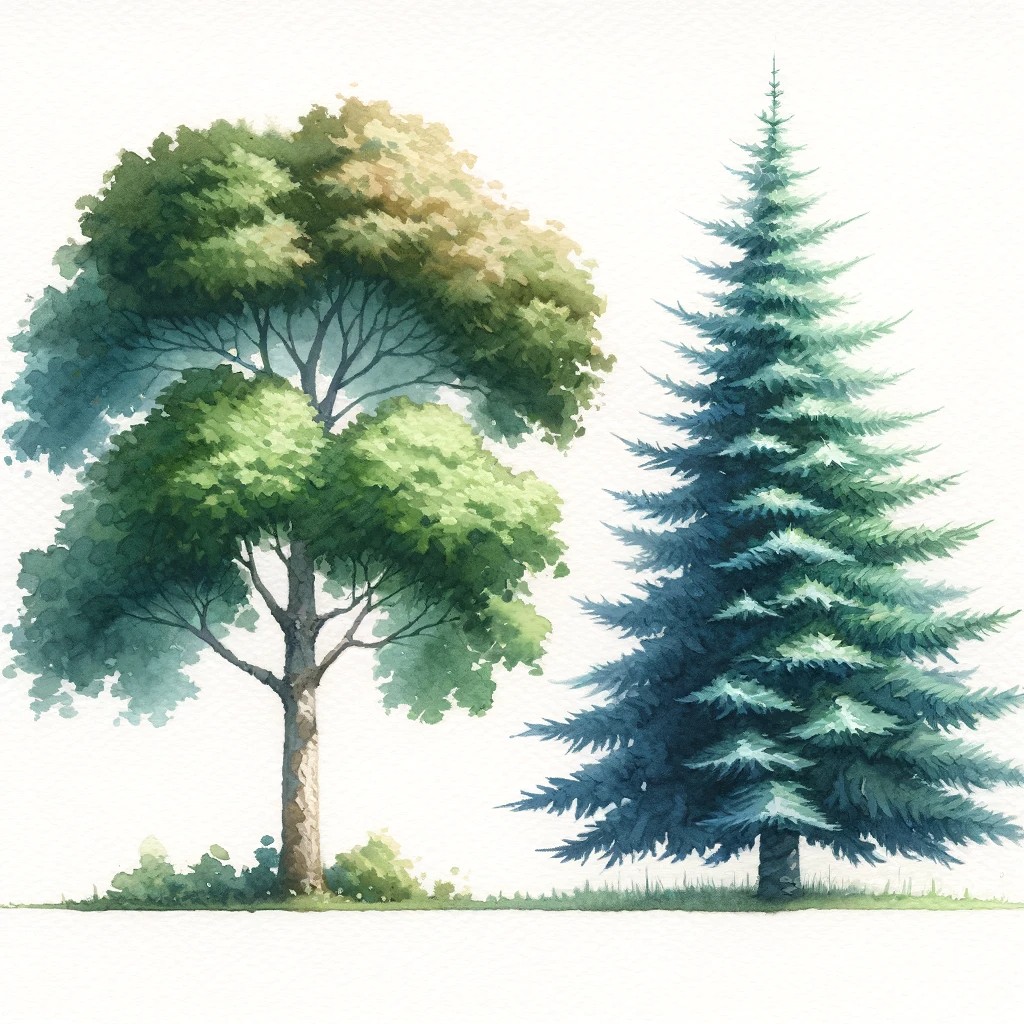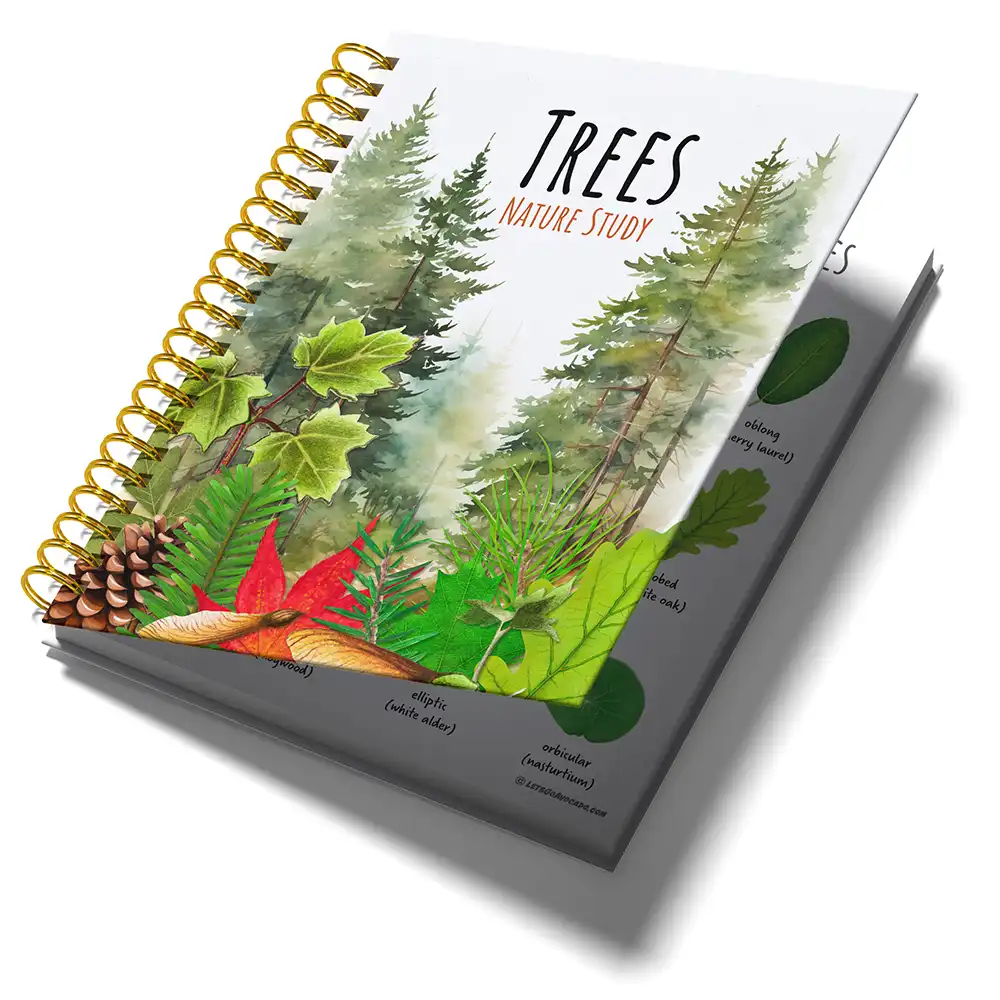This page may contain affiliate links.
Read our disclosure and privacy policy here.
The main difference between deciduous trees and coniferous trees is that deciduous trees are trees that generally drop their leaves to conserve energy when the growing season is done. Coniferous trees generally do not drop their leaves. But other than this main difference, what other differences and similarities exist between these two types of trees? Let’s find out!
Table of Contents
Deciduous Vs Coniferous Trees – What’s The Difference?
Similarities Between Deciduous And Coniferous Trees
Provide Oxygen
Both deciduous and coniferous trees are great at making oxygen. They take in carbon dioxide and, using sunlight, turn it into oxygen for us to breathe.
Grow From Seeds
Whether it’s an oak or a pine, all these trees start their life from seeds. These seeds might look different, but they all have the job of growing into big trees.
Have Roots, Trunks, and Branches
Deciduous and coniferous trees share the same basic parts: roots to soak up water and nutrients, trunks to stand tall, and branches to spread out their leaves or needles.
Provide Homes for Wildlife
Both types of trees are like apartment buildings for animals. Birds, squirrels, and insects all live in these trees, finding food and shelter.
Need Sunlight and Water
Like all plants, both deciduous and coniferous trees need sunlight and water to grow. They use their leaves or needles to catch the sunlight.
Can Live Long Lives
Many of these trees can live for hundreds of years. They keep growing taller and wider as long as they have what they need to live.
Go Through Photosynthesis
Both types of trees use photosynthesis to make their food. This process uses sunlight to turn water and carbon dioxide into food for the tree.
Have Seasons of Growth
In different seasons, these trees do different things. They might grow a lot in spring and summer, then slow down in fall and winter.
Affected by Climate
The climate, or the usual weather in a place, affects how these trees grow. Warmer places might have different trees than colder ones.
Help the Soil
When leaves, needles, or branches fall off these trees, they break down and help make the soil rich and good for other plants to grow in.
Differences Between Deciduous And Coniferous Trees
Leaf Type
Deciduous trees have broad, flat leaves that usually change color and fall off in autumn. Coniferous trees have needles or scale-like leaves that stay on the tree all year.
Seed Type
Deciduous trees have seeds that might be inside fruits or nuts. Coniferous trees usually have seeds in cones, which can be different shapes and sizes.
Growth Habit
Deciduous trees often have a spreading shape, with branches going out in many directions. Coniferous trees are usually more cone-shaped, with branches that are more upward.
Leaf Lifespan
The leaves of deciduous trees live for just one growing season before they fall off. Coniferous tree needles can live for several years before they drop.
Bark Texture
Deciduous trees often have bark that is smoother or flakes off in pieces. Coniferous trees usually have thicker, rougher bark that helps protect them in cold climates.
Seasonal Changes
In fall, deciduous trees turn bright colors and lose their leaves, looking bare in winter. Coniferous trees stay green all year, which is why we use them as Christmas trees!
Adaptation to Cold
Coniferous trees are better adapted to cold, snowy environments. Their needle-like leaves and cone shape help them survive in places where winters are harsh.
Flowering
Most deciduous trees have flowers in spring, which then turn into seeds. Coniferous trees don’t usually have what we think of as flowers; their cones are their way of making seeds.
Leaf Arrangement
Deciduous tree leaves are often arranged in a way that maximizes sunlight absorption. Coniferous needles are arranged to reduce water loss and withstand weight from snow.
Wildlife Support
Different animals rely on these trees. Deciduous trees often provide fruits and nuts for wildlife, while coniferous trees offer year-round shelter and seeds in their cones.

There’s a lot to explore right where we are, in our own neighborhoods and backyards! Join us while we get off the couch and explore the everyday wonders of nature, science, space, engineering, art, and anything else we stumble upon during on our adventures.




